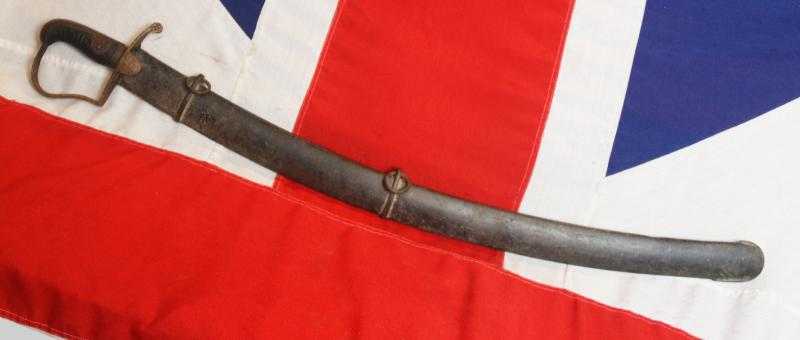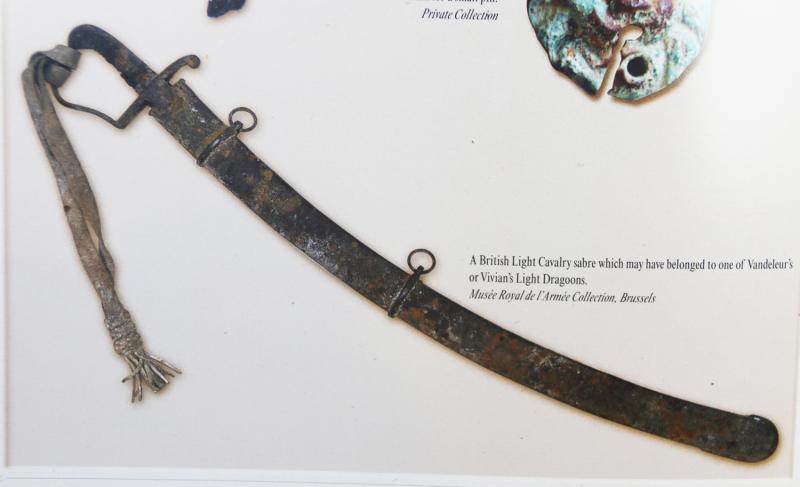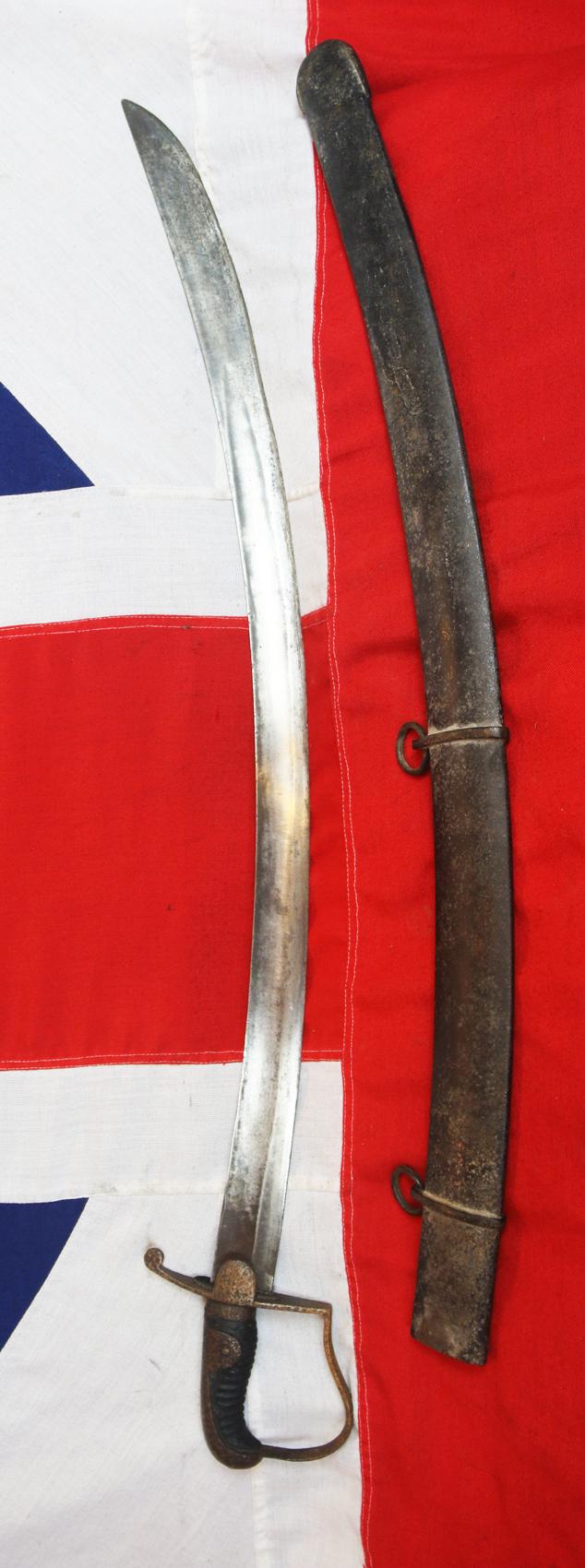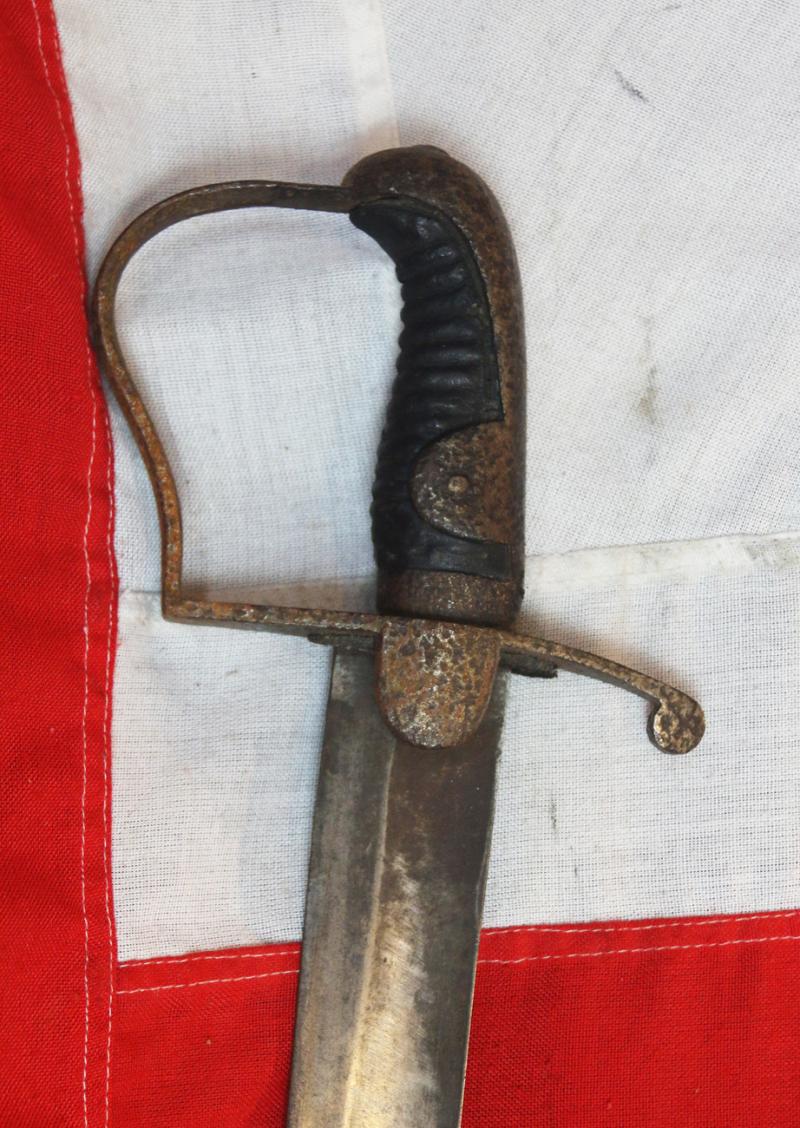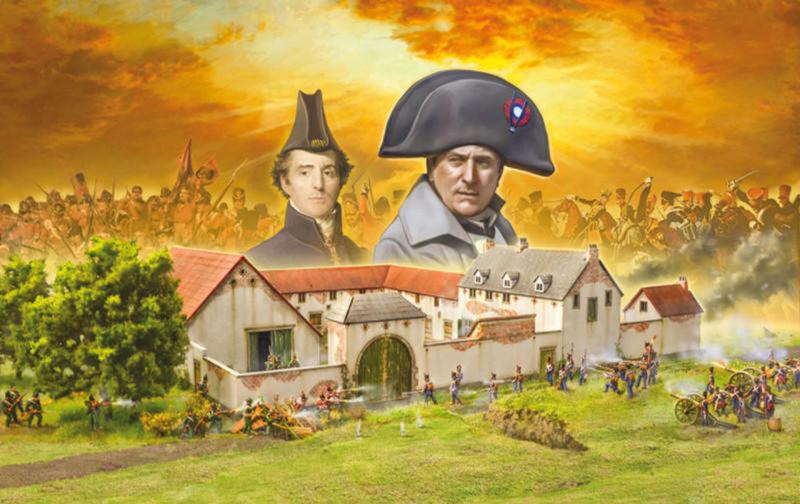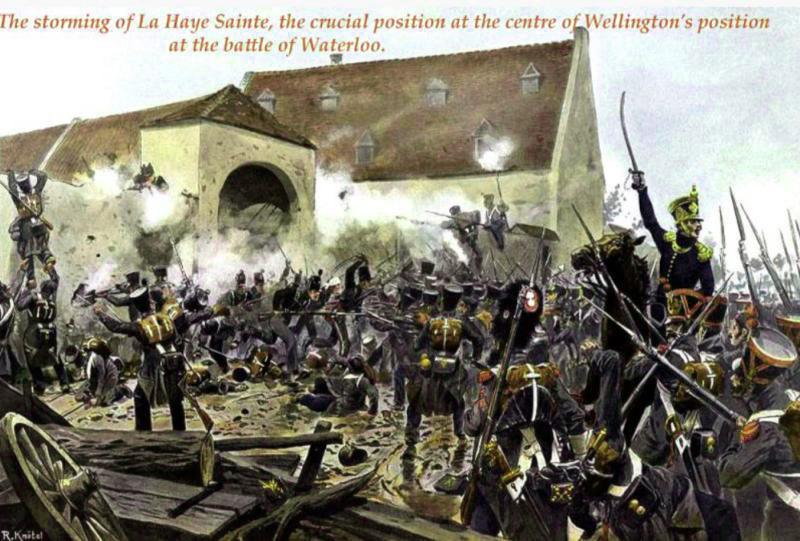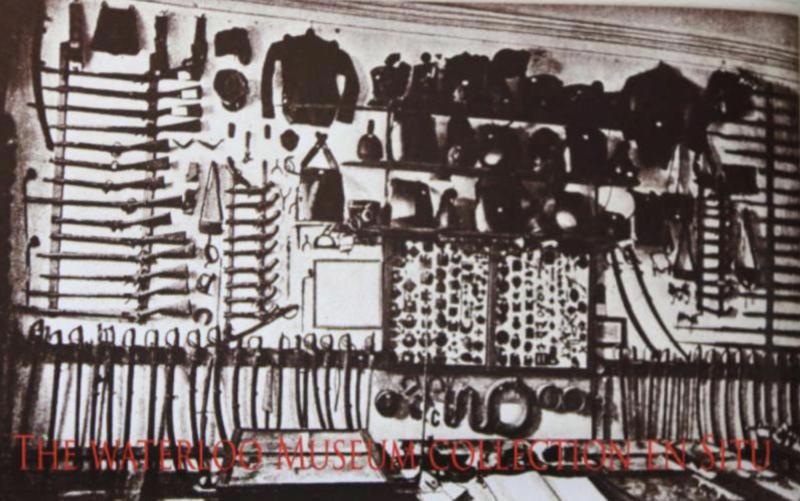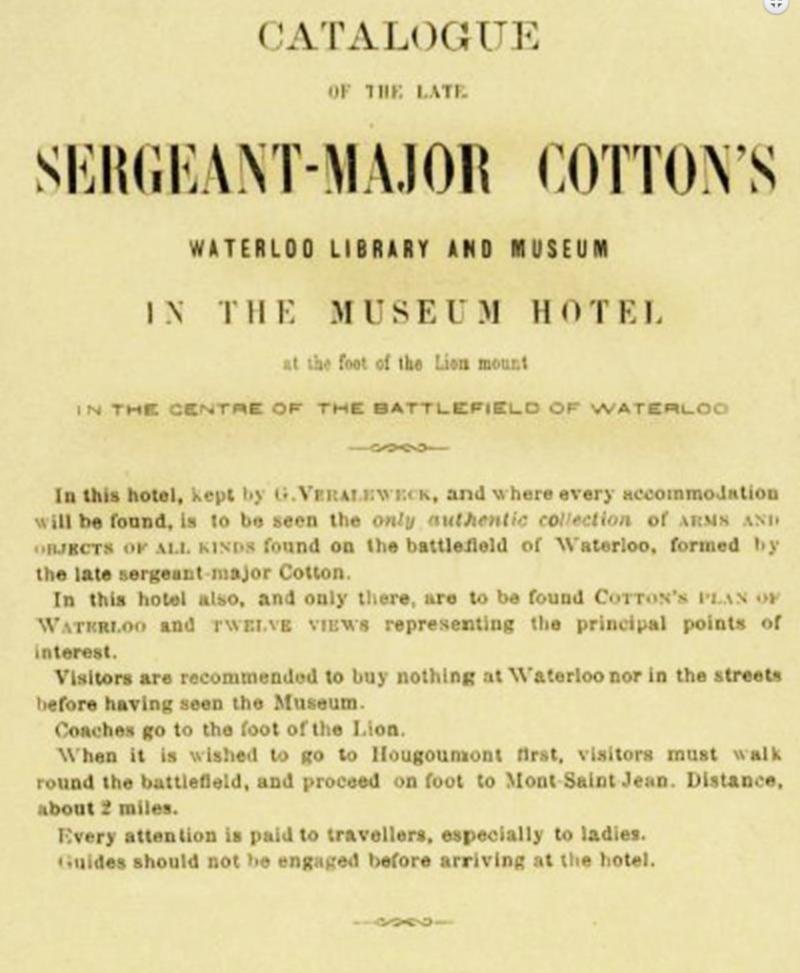A Battle Of Waterloo Recovered, from The Cotton Museum Collection, 1796 Light Dragoon Trooper's Sword Near Identical To Another Recovered From Waterloo in Musee Royale De l'Armee Brussels
In recovered condition, with external russetting, however the blade good and bright. Grip leather completely intact with small worm holing, scabbard near dent free. In much better condition in fact than the example in the Musee Royale De l'Armee in Brussels {see photo from the museum}. Also from Vivians Brigade, used by one of his Hussars between Hougemont and La Haye Sainte.
In April 1815, Sir Hussey Vivian was appointed to command the 6th Brigade of the Earl of Uxbridge's Cavalry Division. Vivian's brigade included the 10th and 18th Hussars as well as the 1st and 2nd Hussars King's German Legion. At the Battle of Waterloo the 6th Brigade was posted on the Duke of Wellington's left flank. In the late afternoon, Vivian's regiments, with those of General Vandeleur's 4th Brigade, were ordered to move to support the centre of the line, which was under pressure from Napoleon's Imperial Guard. After the enemy were repulsed, Vivian's hussars made the final charge of the day between Hougoumont and La Haye Sainte, sweeping the Middle Guard and Line units before them before breaking upon the squares of the Old Guard, which they soon learned to avoid. This service was rewarded by the thanks of both houses of Parliament, an award of the KCH, and the Orders of Maria Theresa and St. Vladimir from the emperors of Austria and Russia.
After hostilities had ceased, Vivian remained in France as part of the Army of Occupation in command of the 2nd Brigade of Cavalry
The Cotton Collection, the full weapons, militaria, and recovered artifact display, from the battlefield, housed at the Hotel du Musee at Waterloo, owned first by Edward Cotton, then by his descendant family, was sold by auction in 1909.
The mounted swordsmanship training of the British emphasised the cut, at the face for maiming or killing, or at the arms to disable. This left masses of mutilated or disabled troops; the French, in contrast, favoured the thrust, which gave cleaner kills. A cut with the 1796 LC sabre was, however, perfectly capable of killing outright, as was recorded by George Farmer of the 11th Regiment of Light Dragoons, who was involved in a skirmish on the Guadiana River in 1811, during the Peninsular War:
"Just then a French officer stooping over the body of one of his countrymen, who dropped the instant on his horse's neck, delivered a thrust at poor Harry Wilson's body; and delivered it effectually. I firmly believe that Wilson died on the instant yet, though he felt the sword in its progress, he, with characteristic self-command, kept his eye on the enemy in his front; and, raising himself in his stirrups, let fall upon the Frenchman's head such a blow, that brass and skull parted before it, and the man's head was cloven asunder to the chin. It was the most tremendous blow I ever beheld struck; and both he who gave, and his opponent who received it, dropped dead together. The brass helmet was afterwards examined by order of a French officer, who, as well as myself, was astonished at the exploit; and the cut was found to be as clean as if the sword had gone through a turnip, not so much as a dint being left on either side of it" The blade is remembered today as one of the best of its time and has been described as the finest cutting sword ever manufactured in quantity.
An extract from an 1862 publication;
HOTEL DU MUSÉE,
AT THE FOOT OF THE LION MOUNT.
This Hotel, kept by a niece of the late Sergeant-Major Cotton, is situated in the very centre of the field of Waterloo, and is strongly recommended to visitors on account of its proximity to the scenes of interest connected with the great battle, and also for the excellent accommodation and comfort it offers at moderate charges.—See Bradshaw’s continental Guide.
The last photo in the gallery shows a photograph of one section of the collection in the museum of Waterloo, taken in around 1900, showing all the weapons of Waterloo en situ, including all the protagonists {British, French, Prussian and Belgian muskets, swords, pistols, armour uniforms, etc}. The museum was founded and owned by a veteran of the 7th Hussars who personally fought at Waterloo. Another photo shows the front page of his collection catalogue
There are many reasons why people enjoy collecting swords. Some people are drawn to the beauty and craftsmanship of swords, while others appreciate their historical and cultural significance. Swords can also be a symbol of power and strength, and some collectors find enjoyment in the challenge of acquiring rare or valuable swords.
One of the greatest joys of sword collecting is the opportunity to learn about the history and culture of different civilisations. Swords have been used by warriors for millennia, and each culture has developed its own unique sword designs and traditions. By studying swords, collectors can gain a deeper understanding of the people who made and used them.
Another joy of sword collecting is the sheer variety of swords that are available. There are swords in our gallery from all over the world and from every period of history. Collectors can choose to specialize in a particular type of sword, such as Japanese katanas or medieval longswords, or they can collect a variety of swords from different cultures and time periods. No matter what your reasons for collecting swords, it is a hobby that can provide many years of enjoyment. Swords are beautiful, fascinating, and historically significant objects
Sadly, each sword once had its inventory label attached, but they are all now lost. With cotton's labels present the prices can be many times the value.
As with all our items, every piece will be accompanied by our fully detailed Certificate of Authentici
Code: 25024
1395.00 GBP

